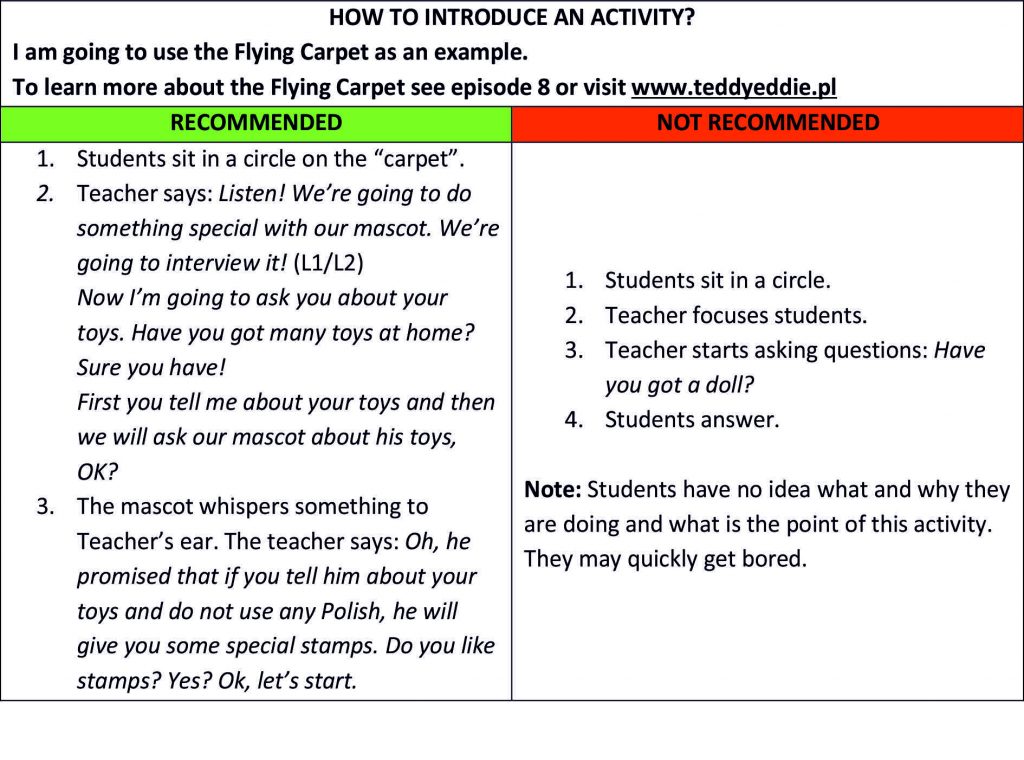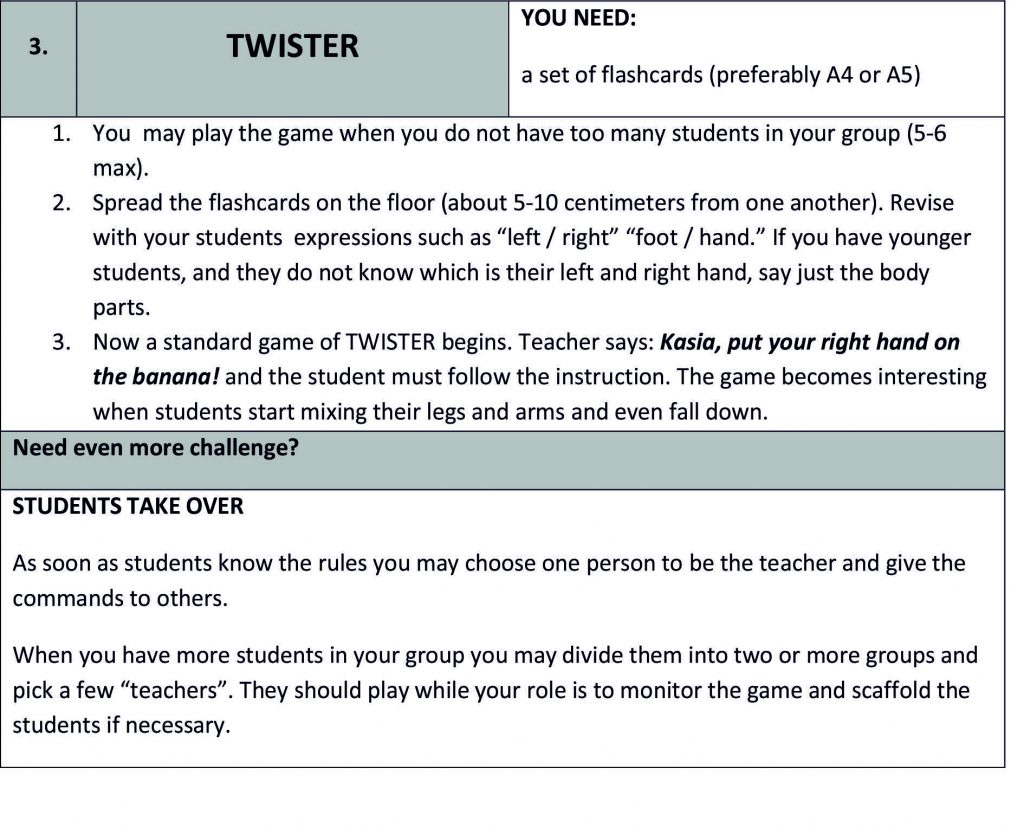This is the last article of the series presenting ideas on how to maximize Young Learners’ language potential which was published in the Teacher Magazine in 2013/14. I have presented plenty of ready-to-use activities and games along with some advice from my classroom experience. You can find them all on Eddie’s blog. The text you are reading now was inspired by a meeting that I organized in November 2013. It was a workshop for teachers who have been working with pre-school children for at least a few years now. The synergy of our experiences resulted in a lot of new ideas which I am going to describe in this article. Our main concern was the fact that after a few years of teaching children it becomes more and more difficult to challenge them properly and effectively and still provide time for some fun during the lesson. I believe that we came up with a few fresh ideas for that. Below you will find ten detailed frameworks presenting new challenging games and activities.
Before presenting that I would like to draw your attention to something that I often see neglected in the classroom. Something that in my opinion may spoil the best activity. I have observed many YL teachers introducing games without any introduction whatsoever. Then finishing them without a proper and significant ending. I believe that the openings and closings are crucial if you want to keep your students motivated, engaged and aware of the learning process.
There is a golden rule I use in my classroom:
FIRST SAY WHAT IS GOING TO BE DONE.
THEN DO IT.
FINALLY, SAY WHAT YOU HAVE JUST DONE.
Young students like to know what is going to happen, e.g. what “great game” and what surprises the teacher has prepared. It is important to set the goal of each exercise or activity. Very often students are reluctant or not eager to do things because they do not see the point of it. Who would like to repeat meaningless sentences for the sake of pure repetition? Surely, not the pre-school child.
Thanks to a proper closure of activities you will be able to build up some learning awareness and simple evaluation. Do not only discuss and/or evaluate single games or exercises but also a lesson as a whole. Ask students what they liked most and what they really enjoyed during the lesson. Give them two activities to vote for (e.g. which one was more fun), ask what was, in their opinion, the “hit” of the lesson, etc.
The advantages of this approach are: students will remember what was going on during the lesson and the lesson will not be a half an hour of random and easily forgettable exercises but a coherent whole: an adventure with different hits and extra events.
CHALLENGING GAMES FOR AMBITIOUS KIDS (AND TEACHERS…) 
Now it is time explore some challenging activities for Young Learners. They are all described in frameworks which should make the planning and preparation easier. Some of the games introduce the first steps in reading and those may be practiced with 6-year-olds.
If you already believe that there is a great potential in very Young Learners you will probably not only enjoy all those exercises but also make up some more. Good luck with your classes!
HAVE YOU READ ALL OUR ARTICLES ON MAXIMIZING CHILDREN’S LANGUAGE POTENTIAL?
If you like this article, let us know! Comment, like or share! Thank you!








